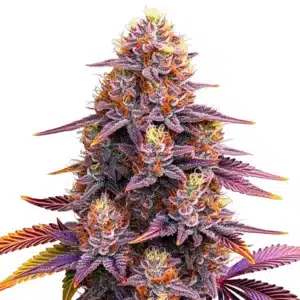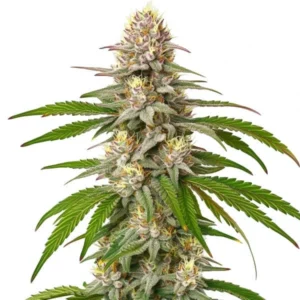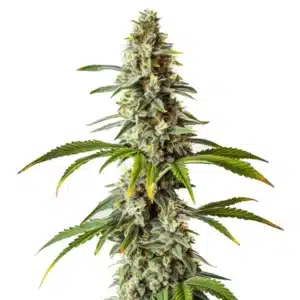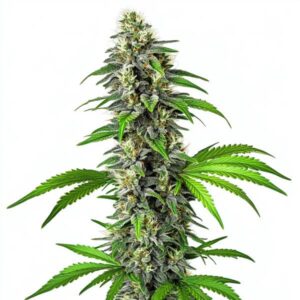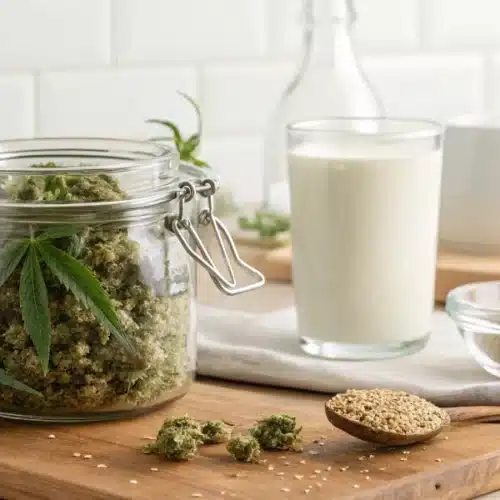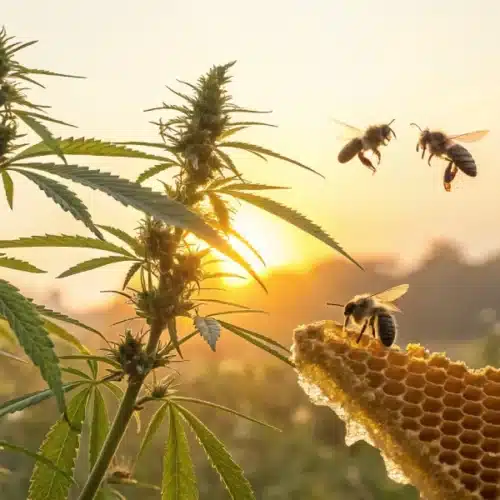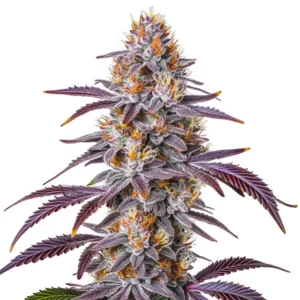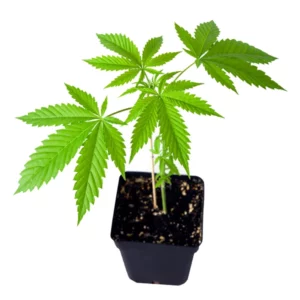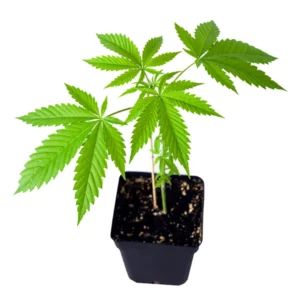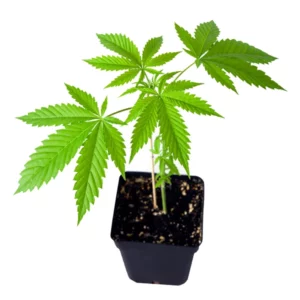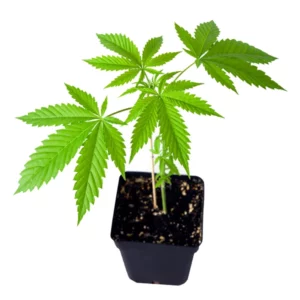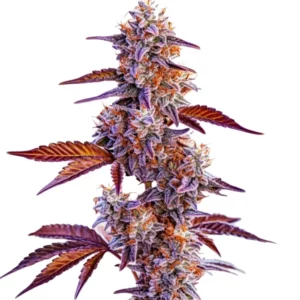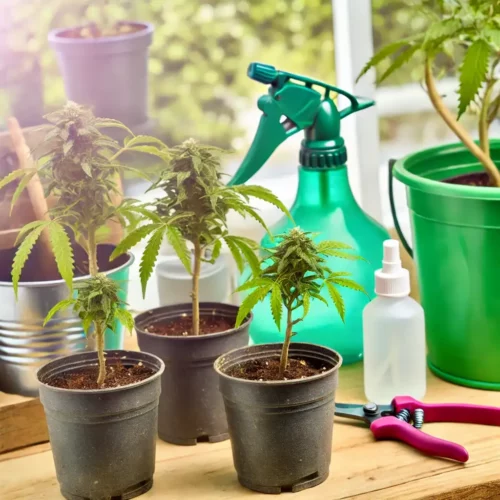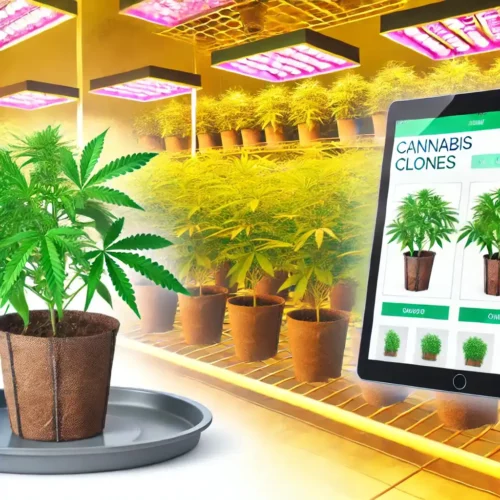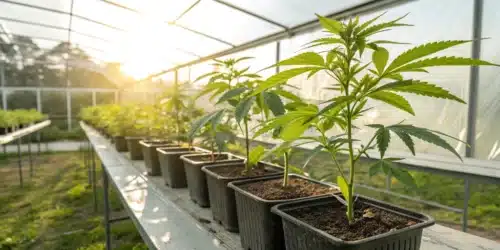Why Cannabis Teen Clones are Ideal for Your Grow
If you’re looking to accelerate your growing process and optimize your yields, cannabis teen clones offer an unmatched advantage. These clones, taken from mature mother plants, are already in the vegetative phase, giving you a head start in your cultivation journey.
Faster Transition to Flowering
Unlike standard clones or seeds, teen clones have already passed the initial stages of growth. They come with established roots, vigorous stems, and a solid canopy of leaves. This allows for an almost immediate transition to the flowering stage. If you’re an outdoor grower in a region with a limited growing season, teen clones can help you maximize your harvest window.
Stronger Roots and Reduced Risk of Pests
Cannabis teen clones possess a more robust root system compared to younger clones. Strong roots are key to absorbing nutrients effectively and providing a stable foundation for the plant to grow tall and produce high-quality buds. This advantage not only speeds up the growth process but also makes the plants more resistant to stress factors like transplanting or changes in the environment.
Teen clones are also more resilient against pests and diseases. Their mature foliage and sturdy stems make it harder for pests to establish a foothold, reducing the likelihood of infestations. This characteristic makes them particularly appealing to growers who prefer a low-maintenance approach while ensuring a healthy, productive crop.
Promos & Deals
Preparing Your Grow Space for Cannabis Teen Clones
Properly setting up your grow space is essential when working with teen clones. Their advanced stage of development means they need a more controlled environment to thrive and transition smoothly to flowering.
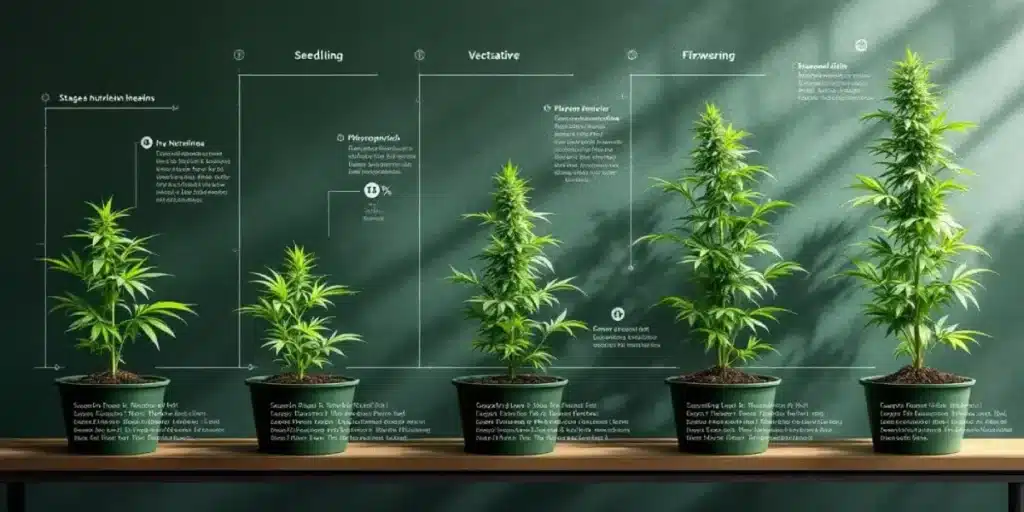
Setting Up Ideal Light and Temperature Conditions
For cannabis teen clones, lighting is critical. As these clones are already in the vegetative phase, they require bright, full-spectrum lighting. For indoor setups, use LED or HID lights, providing 18 hours of light and 6 hours of darkness daily to encourage further vegetative growth. If you plan to transition your teen clones to the flowering stage soon, switch to a 12/12 light cycle.
Maintaining a stable temperature between 70-80°F (21-27°C) is also crucial for cannabis teen clones. Sudden changes in temperature can stress the plants, impacting their overall health and productivity. Keep an eye on humidity levels, aiming for around 60% during the vegetative stage. As the clones mature, gradually reduce the humidity to around 50% to prevent mold and mildew.
Choosing the Right Pot Size for Teen Clones
Cannabis teen clones have an established root system that requires adequate space to expand. When transplanting them into their final pots, choose containers that are at least 3-5 gallons in size. This gives the roots enough room to grow, promoting healthier plant development. Understanding the differences in root development and space needs is essential when comparing clones vs teens, as teens typically require larger containers and more immediate nutrients.
For indoor growers with limited space, consider using fabric pots. They allow for better air circulation and drainage, reducing the risk of overwatering and root rot. Outdoor growers can use larger containers or plant directly into the ground, ensuring the clones have ample room to spread out and flourish.
Caring for Cannabis Teen Clones
Once you’ve got your grow space set up, the next step is nurturing your cannabis teen clones to maximize their potential. Proper care at this stage will lead to vigorous growth and bountiful yields.
Feeding Schedule for Vigorous Growth
Teen clones have higher nutrient demands than younger plants. Begin with a nutrient solution rich in nitrogen to support leafy growth during the vegetative phase. Gradually introduce phosphorus and potassium as the clones transition into flowering. Pay attention to the clone’s response to your feeding schedule, adjusting the nutrient levels based on their needs.
For hydroponic systems, monitor the pH and electrical conductivity (EC) levels to ensure optimal nutrient absorption. Consistently check for signs of nutrient deficiencies, such as yellowing leaves or slowed growth, and address them promptly to keep your clones thriving.
Pruning and Training for Maximum Light Exposure
Cannabis teen clones benefit greatly from pruning and training. Remove lower leaves and branches that don’t receive enough light. This allows the plant to focus its energy on the top canopy, where the most significant bud development occurs.
Training techniques like Low-Stress Training (LST) and topping can also enhance light exposure and promote a more even canopy. By bending and securing the branches of your clones, you create more bud sites, leading to higher yields. With teen clones, these methods are especially effective because they already have a more developed structure, making them easier to manipulate.
Elevating Your Grow: Selecting the Right Strain Clones
Now that you understand how to care for and maximize your clones, let’s explore some strains ideal for different grow environments and goals.
Gruntz
Gruntz is a popular indica-leaning hybrid, well-known for its resilience and strong structure. This strain adapts well to indoor setups, producing dense, resinous buds with a fruity, candy-like aroma. It’s an excellent choice for growers seeking high yields and a relaxing, euphoric effect.
Gelato 33
Gelato 33 is a favorite among cultivators for its balanced hybrid nature and visually striking buds. It thrives in both indoor and outdoor environments, making it a versatile strain for various grow setups. With its sweet, dessert-like flavor and potent effects, Gelato 33 is perfect for those looking for a strain that balances cerebral stimulation and physical relaxation.
Jelly Cake
Jelly Cake is a heavy-hitting strain that flourishes in indoor environments. This indica-dominant hybrid produces large, dense buds coated in sticky resin. Its rich, sweet aroma combined with relaxing effects makes it a go-to for growers who want a strain that offers both impressive yields and high potency.
Where to Buy Quality Cannabis Teen Clones
Finding a reputable source is crucial when buying cannabis teen clones online. Look for online suppliers that provide detailed information about each clone’s genetics, current health status, and growing requirements.
Trusted Online Suppliers for Cannabis Teen Clones
Top-rated online clone suppliers often work with licensed breeders to ensure the quality and genetic integrity of their clones. They provide a variety of strains allowing you to choose clones tailored to your specific grow goals. Additionally, these suppliers typically offer health guarantees, ensuring you receive pest-free and disease-free clones.
How to Inspect Teen Clones Before Purchase
Reputable online sellers provide photos of their clones, showcasing the plant’s health and vigor. Before making a purchase, scrutinize these images for signs of pests, discoloration, or weak stems. Healthy cannabis teen clones should have vibrant, green foliage, thick stems, and no visible signs of stress or damage.
Read customer reviews to learn about others’ experiences with the supplier. A trusted seller will have positive feedback, indicating that their clones consistently meet growers’ expectations.
Enhancing Your Grow: Maximizing Cannabis Teen Clone Potential
Teen clones are already in an advanced stage of growth, allowing you to employ advanced techniques to maximize your yields and enhance the plant’s potency.
Techniques for Topping and Low-Stress Training
Once your teen clones are settled in their grow environment, you can begin topping and training them. Topping involves cutting the top of the main stem, promoting the growth of multiple colas. This method is particularly effective for strains which tend to develop a bushy structure that benefits from an even canopy.
Low-Stress Training (LST) is another technique where branches are gently bent and secured to create an open, horizontal canopy. This approach allows light to penetrate deeper into the plant, stimulating bud development on lower branches.
Monitoring Light Cycles for Early Flowering
When you’re ready to transition your clones to the flowering stage, switch to a 12/12 light cycle. This change signals the plant to start producing buds. For outdoor growers, planting your clones in spring will give them ample time to develop before the natural light cycle changes in late summer.
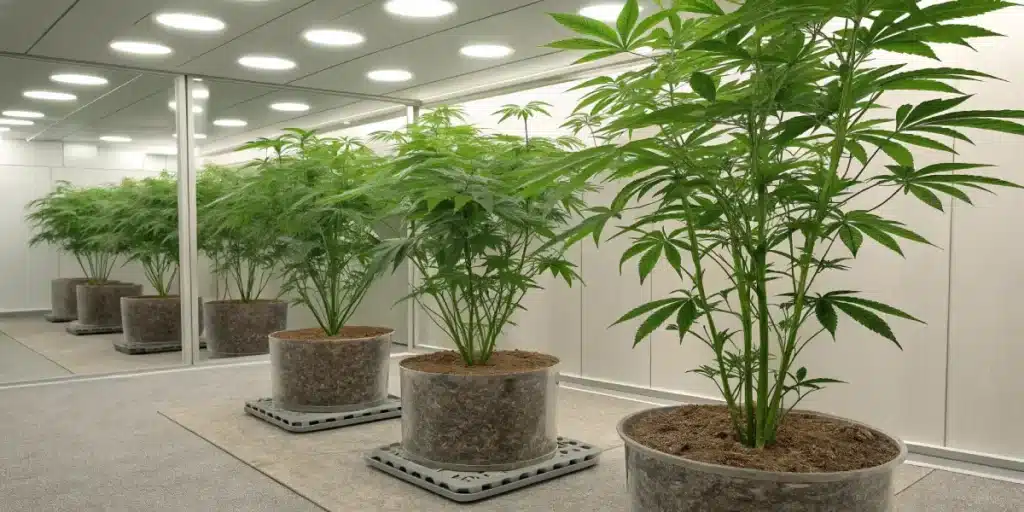
Troubleshooting Issues with Cannabis Teen Clones
Even with the best care, cannabis teen clones can encounter challenges that require prompt action to keep your grow on track. Being prepared to address these issues will save your clones and ensure a successful harvest.
Addressing Transplant Shock in Teen Clones
Transplant shock is a common issue that can affect cannabis teen clones when they are moved to a new environment. Symptoms include drooping leaves, yellowing foliage, and slowed growth. To minimize the risk of transplant shock, water your clones immediately after transplanting and avoid exposing them to extreme temperatures or harsh light for the first few days.
If you notice signs of shock, try misting the clones with water to increase humidity and reduce stress. For indoor growers, dim the lights or increase the distance between the light source and the clones to prevent light stress. A root stimulator can also be applied to help boost root growth and expedite the recovery process.
Identifying and Treating Nutrient Deficiencies
Cannabis teen clones require a balanced nutrient regimen to support their rapid growth. However, even with the best intentions, deficiencies can occur. Common signs include yellowing leaves (nitrogen deficiency), purple stems (phosphorus deficiency), or curled leaf edges (potassium deficiency).
To correct nutrient imbalances, first check the pH level of your soil or hydroponic solution. Cannabis clones absorb nutrients most efficiently in a pH range of 6.0-6.5 for soil and 5.5-6.0 for hydroponic systems. Adjust the pH as needed to ensure proper nutrient uptake. Next, supplement your feeding schedule with the appropriate nutrients to address the deficiency. For example, use a nitrogen-rich solution for yellowing leaves or a phosphorus supplement to support root and flower development.
Managing Stress for Optimal Growth
Cannabis teen clones can be sensitive to environmental changes, and stress can hinder their growth. Stress factors include fluctuating temperatures, improper light cycles, and inconsistent watering practices. To manage stress, maintain a stable environment with proper ventilation, consistent temperature, and humidity levels. For indoor growers, automate your light cycles and use timers to maintain a regular day-night rhythm, which is crucial for clones’ health.
If your clones seem stressed, give them a few days of gentle care, keep the temperature moderate, reduce light intensity, and avoid excessive pruning. Allow the clones to adapt to their environment before introducing more advanced techniques like training or heavy feeding.
Enhancing Your Grow with Cannabis Teen Clones
Growing cannabis teen clones opens up a world of opportunities for maximizing yield and potency. By taking advantage of their advanced stage of development, you can implement various techniques to push your garden to its full potential.
Techniques for Topping and Low-Stress Training
Topping and Low-Stress Training (LST) are essential practices to enhance your clones’ growth and overall yield. Topping involves cutting the main stem’s tip to encourage lateral growth, resulting in more colas and a bushier plant. This method is especially effective for taller, lanky strains which can benefit from a more even canopy.
LST, on the other hand, involves gently bending and securing branches to optimize light exposure and airflow within the canopy. This technique reduces the risk of mold and mildew by allowing air to circulate more freely through the foliage. LST is particularly effective for indoor growers with limited vertical space, as it encourages horizontal growth, maximizing the available light. Some strains respond well to LST, producing multiple, densely packed bud sites.
Managing Light Cycles for Early Flowering
The light cycle is a key factor in managing the growth and flowering of cannabis clones. During the vegetative phase, provide 18 hours of light and 6 hours of darkness to promote strong, leafy growth. When you’re ready to initiate flowering, switch to a 12/12 light cycle. This change signals the plant to start producing buds.
Outdoor growers should time their planting to take advantage of natural light cycles. For regions with long summer days, plant your clones in early spring to give them ample time to develop before the daylight hours naturally shorten in late summer. If growing indoors, using timers can help maintain consistent light cycles, preventing light stress and optimizing bud development.
Why Buying Cannabis Teen Clones Online is the Best Option
In the modern cannabis market, buying teen clones online offers growers unparalleled access to quality genetics and healthy plants. Let’s explore why this method stands out from traditional ways of acquiring clones.
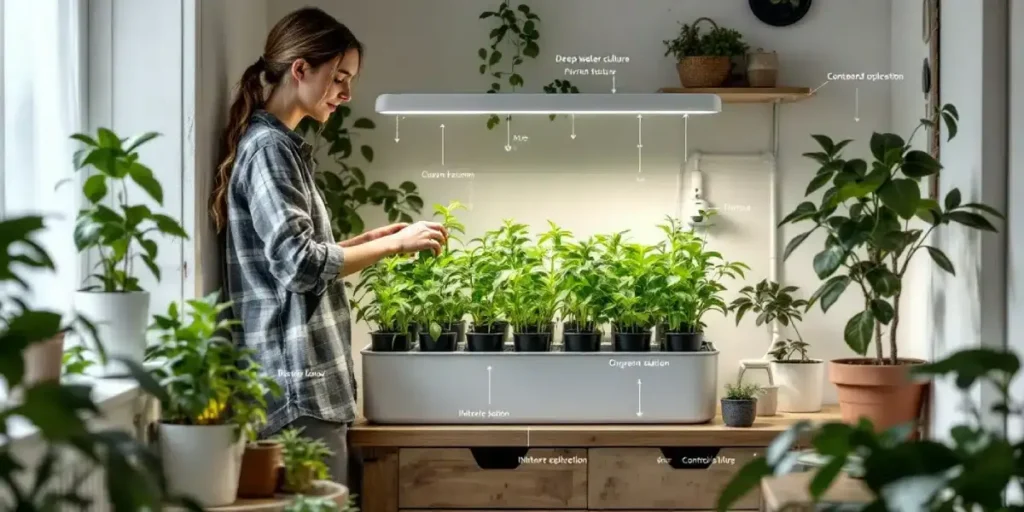
Online Stores Offer Access to Rare and Premium Strains
Online clone suppliers often provide a broader range of strains than local dispensaries or nurseries. When you buy cannabis teen clones online, you can choose from an extensive catalog tailored to various growing environments, potency levels, and flavor profiles. This variety allows you to experiment with different strains and find the ones that best match your growing style and goals.
Fresh, Healthy Clones Delivered to Your Door
One of the main advantages of buying cannabis teen clones online is the convenience of doorstep delivery. Reputable suppliers package their clones carefully, using materials that maintain moisture and protect the plants during transit. This ensures that the clones arrive in optimal condition, ready for transplanting into your grow space. To support healthy development, it’s important to provide the right after transplanting cannabis clone nutrients, ensuring a smooth transition and strong root establishment.
Online sellers often include care instructions with your order, helping you acclimate the clones to their new environment. This level of support is invaluable, particularly for those who are new to growing with teen clones.
Quality Assurance from Trusted Online Sellers
When you buy from trusted online sellers, you get quality assurance that local sources may not provide. Reputable online clone suppliers work with licensed breeders to ensure their clones are healthy, pest-free, and true to the strain’s genetic profile. Many sellers also offer health guarantees, promising a refund or replacement if the clones arrive in poor condition.
This assurance not only protects your investment but also gives you peace of mind, knowing that the clones you receive will grow into robust, high-yielding plants.
FAQs about Cannabis Teen Clones
How are cannabis teen clones different from regular clones?
Cannabis teen clones are more mature than standard clones. They have established roots, thicker stems, and a full canopy of leaves. Unlike younger clones, teen clones are well into the vegetative stage, which means they can be transitioned to flowering much faster. This maturity also makes them more resistant to stress factors like pests and transplant shock.
How do I care for cannabis teen clones right after purchase?
Once you receive your cannabis teen clones, carefully inspect them for any signs of pests or disease. Then, transplant them into their final pots or growing medium and water them thoroughly to reduce transplant shock. Keep them in a well-ventilated area with stable temperature and humidity. It’s best to provide 18 hours of light for the first few days to help them acclimate before transitioning to a regular light cycle.
Can I grow cannabis teen clones both indoors and outdoors?
Yes, cannabis teen clones can thrive both indoors and outdoors. However, the success of your grow depends on selecting a strain suitable for your environment. For indoor grows, choose compact strains. For outdoor cultivation, opt for strains that can handle varying weather conditions. Adjust your care routine based on the growing conditions to maximize their growth and yield.
What is the best light cycle for cannabis teen clones?
During the vegetative phase, provide your cannabis teen clones with 18 hours of light and 6 hours of darkness each day. This promotes vigorous growth and prepares the plants for flowering. When you’re ready to initiate the flowering stage, switch to a 12/12 light cycle (12 hours of light and 12 hours of darkness). For outdoor growing, let the natural light cycle guide the plants, planting them in spring to take advantage of longer daylight hours.
How long do cannabis teen clones take to reach harvest?
Cannabis teen clones typically reach harvest faster than plants grown from seeds. Depending on the strain, teen clones may take 8-12 weeks from the vegetative stage to the flowering stage and then an additional 6-10 weeks to mature and be ready for harvest.
What nutrients do cannabis teen clones need?
Cannabis teen clones require a nutrient-rich environment to support their rapid growth. During the vegetative stage, use a nutrient solution high in nitrogen. As they transition to flowering, shift to a formula rich in phosphorus and potassium to support bud development. Always monitor the clones for signs of nutrient deficiencies and adjust your feeding schedule accordingly.
Can I clone cannabis teen clones?
Yes, you can take cuttings from cannabis teen clones to create more clones. However, it’s crucial to ensure that the original clone is healthy and thriving before attempting this. The new cuttings will be genetic copies of the teen clone, retaining the same characteristics and growth patterns. Use sterile tools when taking cuttings and follow proper cloning procedures to increase the success rate.

